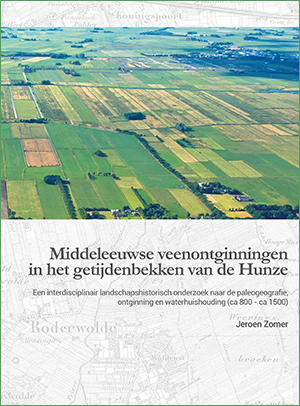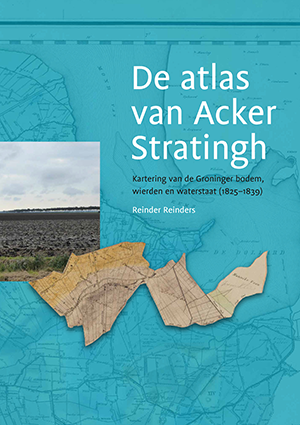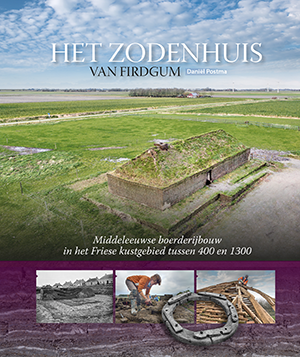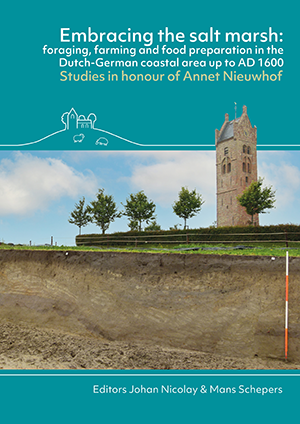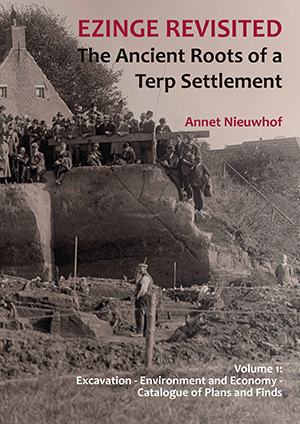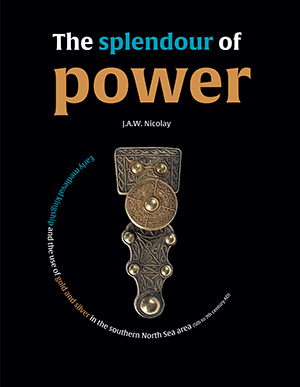The study of ritual practice in the past is an accepted part of archaeological research these days. Yet, its theoretical basis is still not fully mature. This book aims at making a contribution to the study of ritual practice inthe past by assembling a theoretical framework, which is tailored to the needs of archaeology, and which helps to identity and interpret the remains of rituals in thepast. This framework is applied in a special archaeological region: the coastal area of the northern Netherlands, a former salt marsh area. In the past, people lived here on artificial dwelling mounds, so-called terps. Preservation conditions are excellent in this wetland area. This study makes use of the well-preserved remains of rituals in terps, to examine the role of ritual practice in the societies of the pre-Roman and Roman Iron Age in this area.
Reviews
“…a showcase for interpretative archaeology of the highest calibre.” Melanie Giles, “Review article: Death, burial and ritual in Iron Age Britain and the Netherlands”, in Antiquity 90.352 (2016), 1108 – 1110
Melanie Giles in Antiquity 90.352 (2016), 1108 – 1110
Frauke Mohrwinkel in Germania 96 (2018), 334-339
1 Introduction 11
1.1 A curious find 11
1.2 Research questions 11
1.3 The research area and period 11
1.3.1 Archaeological framework 12
1.3.2 Chronological framework 13
1.4 The study of ritual 14
1.5 Method 15
1.6 The human nature bias 16
Part 1 The archaeological context 17
2 Terp archaeology and the use of historical sources 19
2.1 Introduction 19
2.2 History of terp archaeology 19
2.2.1 Pioneers 19
2.2.2 A destructive phase 19
2.2.3 The collection of objects 20
2.2.4 From finds to context 22
2.2.5 The start of modern terp research 23
2.2.6 New approaches 23
2.2.7 Conclusion 24
2.3 Historical sources, ethnic identity and historical events 24
2.3.1 Historical sources 24
2.3.2 Germani, Frisii and Chauci and their history 26
2.3.3 Conclusion 28
3 Occupation history, landscape and subsistence 29
3.1 Introduction 29
3.2 Occupation history 29
3.2.1 Colonization 29
3.2.2 Changes in the 1st century AD 30
3.2.3 Cultural influences from the east 30
3.2.4 The end of habitation 31
3.2.5 Summary 32
3.3 Life in the salt marsh landscape 33
3.3.1 Settling in a dynamic landscape 33
3.3.2 Agriculture, food and drink 35
3.3.3 Byres, houses and raw materials 37
3.4 Conclusion 39
4 Social and spiritual life of the inhabitants of the terp region 40
4.1 Introduction 40
4.2 The family 40
4.3 Political organization and martial values 42
4.3.1 The Gefolgschaft-system 42
4.3.2 Contacts with the Romans 44
4.3.3 Socio-political organization in the coastal area 46
4.4 Ritual, religion and dealing with the dead 48
4.4.1 Dealing with the dead 48
4.4.2 Religion 48
4.4.3 Ritual 51
4.5 Conclusion 53
5 Remains of rituals in surrounding areas 54
5.1 Introduction 54
5.2 The remains of rituals in settlements 55
5.2.1 Rituals associated with houses 55
5.2.2 Rituals in settlements outside houses 56
5.3 The remains of rituals outside settlements 57
5.3.1 Depositional practice and the landscape 57
5.3.2 Peat bogs 58
5.4 Burial customs 61
5.4.1 Western Netherlands 61
5.4.2 The Pleistocene inland 62
5.4.3 Germany 63
5.5 Conclusions 65
Part 2 Theory of ritual 67
6 Ritual, religion and the mind 69
6.1 Introduction 69
6.2 The mind 70
6.3 Origin and function of ritual and religion 71
6.4 Religion 73
6.5 Ritual, ritualization and ritualized behaviour 74
6.6 The bond between ritual and religion 76
6.7 Definitions of religion and ritual 78
6.7.1 Religion 78
6.7.2 Ritual 78
6.8 Conclusion 79
7 Diversity and dynamics of ritual practice 81
7.1 Introduction 81
7.2 Participants 81
7.3 Types of ritual 82
7.3.1 Rites of passage 82
7.3.1.1 Separation, transition and incorporation 82
7.3.1.2 Rituals surrounding death 84
7.3.2 Religious rituals 86
7.3.2.1 Agents, patients and instruments 86
7.3.2.2 Magic 87
7.3.2.3 Offering and sacrifice 87
7.4 The doctrinal versus the imagistic mode 90
7.5 Ritual dynamics 91
7.6 Conclusion 92
8 Aspects of the meaning and interpretation of ritual practice 94
8.1 Introduction 94
8.2 Symbolic meaning 94
8.3 Gift exchange in ritual 96
8.3.1 The concept of gift exchange 96
8.3.2 The role of gift exchange in ritual 98
8.3.2.1 Sharing, charity, ritual meals and feasting 98
8.3.2.2 Fragmentation, enchainment and accumulation 100
8.4 Religious meaning 102
8.4.1 Gods and spirits 102
8.4.2 Ancestors 103
8.4.3 The sacred 104
8.5 Aspects of the concept of meaning 105
8.6 Interpretative biases 106
8.6.1 The homo economicus bias 106
8.6.2 The contagion bias 107
8.6.3 The human nature bias 107
8.7 Conclusion 109
9 The remains of rituals in the archaeological record 110
9.1 Introduction 110
9.2 Identifying the remains of rituals 110
9.2.1 Ritual versus non-ritual 110
9.2.2 Criteria 111
9.3 The identification of rituals in terps: a toolkit 112
9.3.1 The identification of the non-ritual 112
9.3.1.1 Features 112
9.3.1.2 Refuse 113
9.3.1.3 Material categories 113
9.3.2 The identification of rituals 114
9.4 Approaching the meaning of rituals: a cultural biography of rituals and symbols 117
9.5 Conclusion 119
Part 3 Remains of rituals in terps 121
10 Case study I: Remains of rituals in the terp of Englum 123
10.1 Introduction 123
10.1.1 The excavation and its results 123
10.1.2 Representativeness 125
10.2 Eight human skulls in a dung heap in trench 4 127
10.2.1 The context 127
10.2.2 Finds 128
10.2.2.1 Human bone 130
10.2.2.2 Animal bone 133
10.2.2.3 Pottery 134
10.2.2.4 Structure 134
10.2.2.5 Other finds 136
10.2.2.6 Dating 137
10.2.3 Reconstructing events 137
10.2.4 Was this a ritual? 137
10.2.5 Methods for interpretation 138
10.2.6 Ritual elements 138
10.2.6.1 Human remains 138
10.2.6.2 Dung and cattle 140
10.2.6.3 Pottery 141
10.2.6.4 Breaking, burying and burning 141
10.2.6.5 Circle 141
10.2.7 Interpretation 142
10.3 Other remains of rituals in Englum 143
10.3.1 Introduction 143
10.3.2 Discussion and interpretation 144
10.3.2.1 Material categories 144
10.3.2.2 Pottery 144
10.3.2.3 Contexts 149
10.3.2.4 Associated actions 151
10.3.2.5 Social categories 153
10.4 Summary 155
11 Case study II: Remains of rituals in the terp of Ezinge 159
11.1 Introduction 159
11.1.1 The excavations at Ezinge 159
11.1.2 Representativeness 161
11.2 Results 162
11.2.1 Introduction 162
11.2.2 Material categories 163
11.2.2.1 Pottery 163
11.2.2.2 Ceramic artefacts 176
11.2.2.3 Terra sigillata 180
11.2.2.4 Metal objects 182
11.2.2.5 Wooden objects 183
11.2.2.6 Stone objects 186
11.2.2.7 Miscellaneous: textiles, combs, hair, beads 188
11.2.2.8 Animal remains 190
11.2.2.9 Human remains 194
11.2.3 Contexts 201
11.2.3.1 Inside or outside houses 201
11.2.3.2 Deposits in houses 203
11.2.3.3 Deposits outside houses 205
11.2.3.4 Depositional practice in relation to the lay-out of the settlement 208
11.2.3.5 Differences and similarities in ritual practice between households 208
11.3 Interpretation 210
11.3.1 Existing categories 210
11.3.1.1 The doctrinal and the imagistic modes 210
11.3.1.2 Non-religious and religious rituals 210
11.3.2 Categories from the Englum case study 211
11.3.3 Interpretative categories 211
11.3.3.1 Category 1: rituals concerning individual persons 212
11.3.3.2 Category 2: rituals accompanying the life cycle of houses 213
11.3.3.3 Category 3: rituals aimed at the household 213
11.3.3.4 Category 4: rituals associated with technological processes 214
11.3.3.5 Category 5: rituals concerned with the community 215
11.3.3.6 Category 6: rituals associated with social contacts outside the settlement. 215
11.3.3.7 Category 7: rituals associated with sociopolitical life 215
11.3.3.8 Category 8: rituals associated with cosmology and with ordering the world 216
1.4 Changes through time 217
11.4.1 Middle pre-Roman Iron Age 217
11.4.1.1 Material categories 217
11.4.1.2 Contexts 218
11.4.1.3 Diversity and the doctrinal and imagistic modes 218
11.4.1.4 Non-religious and religious rituals 218
11.4.1.5 Interpretative categories 218
11.4.2 Late pre-Roman Iron Age 219
11.4.2.1 Material categories 219
11.4.2.2 Contexts 219
11.4.2.3 Diversity and the doctrinal and imagistic modes 219
11.4.2.4 Non-religious and religious rituals 219
11.4.2.5 Interpretative categories 219
11.4.3 Early Roman Iron Age 220
11.4.3.1 Material categories 221
11.4.3.2 Contexts 221
11.4.3.3 Diversity and the doctrinal and imagistic modes 221
11.4.3.4 Non-religious and religious rituals 222
11.4.3.5 Interpretative categories 222
11.4.4 Middle Roman Iron Age 223
11.4.4.1 Material categories 223
11.4.4.2 Contexts 223
11.4.4.3 Diversity and the doctrinal and imagistic modes 223
11.4.4.4 Non-religious and religious rituals 223
11.4.4.5 Interpretative categories 224
11.5 Conclusions 225
11.5.1 Human remains 225
11.5.2 The supernatural 226
11.5.3 Meaningful objects and identity 227
11.5.4 Ritual practitioners 227
11.5.5 Tradition and change 228
11.5.6 Comparisons 228
12 Burials and bones: remains of humans (and of dogs) in the terp region 229
12.1 Introduction 229
12.2 The collection of human remains in the past 230
12.3 Representativeness 232
12.4 Dating 234
12.4.1 Archaeological dates 234
12.4.2 Radiocarbon dates 235
12.4.2.1 Early medieval burials 235
12.4.2.2 The use of radiocarbon dates 236
12.4.3 Radiocarbon dates and stable isotopes 240
12.5 Results and discussion 243
12.5.1 Inhumations 243
12.5.1.1 Sex, age and health 244
12.5.1.2 Orientation 248
12.5.1.3 Body posture 248
12.5.1.4 Grave goods 251
12.5.1.5 Location 253
12.5.2 Partial skeletons 253
12.5.3 Human sacrifice 255
12.5.3.1 Argument 1: Bog bodies 256
12.5.3.2 Argument 2: Child burials 256
12.5.3.3 Conclusion 257
12.5.4 Cremations 258
12.5.5 Single bones and excarnation 262
12.5.5.1 The finds 262
12.5.5.2 Headhunting and skull cult? 269
12.5.5.3 The excarnation process 270
12.5.6 The role and meaning of dogs 275
12.5.6.1 Dogs in the archaeological record 275
12.5.6.2 The symbolical meaning of dogs 277
12.5.7 Location 278
12.6 Conclusion: burial customs and the use of human remains in the terp region 280
Part 4 Conclusions 285
13 Ritual practice in the terp region 287
13.1 Introduction 287
13.2 The social, political, cultural and natural environment of the terp region during the pre-Roman and Roman Iron Age 287
13.3 Theory of ritual 288
13.4 The identification and interpretation of the remains of rituals in the archaeological record 289
13.5 Different types of ritual 290
13.6 Rituals in daily life and in social contacts 292
13.7 Burials customs and the use of human remains 293
13.8 Beliefs and religious concepts 294
13.9 Changing ritual practice 295
13.10 Epilogue 296
14 Recommendations 297
Appendices 299
A Catalogue of remains of rituals from Englum 301
B Ezinge 315
C Catalogue of human remains from the terp region in the provinces of Friesland and Groningen 361
References 415
Samenvatting (Dutch summary) 435
Inleiding 435
De theorie van het ritueel handelen 436
De herkenning en interpretatie van de restanten van rituelen in het bodemarchief 437
Rituelen in het dagelijkse leven en in sociale contacten 437
Grafrituelen en het gebruik van menselijke resten 438
Geloof en religieuze voorstellingen 439
Veranderingen 440
Epiloog 442
Acknowledgments 443
Illustrations 445
About the author

